Research Article
Volume 2 Issue 4 - 2018
Antibacterial Activity of Ilex Paraguariensis on Enterococcus Faecalis by the Kirby-Bauer Method: An In Vivo Pilot Study
1Sp, Md and PhD in Endodontics - Endodontics Department - Tuiuti University of Paraná - Brazil
2Dentistry - Endodontics Department - Tuiuti University of Paraná - Brazil
3Md and PhD in Microbiology - Federal University of Paraná - Brazil
4Sp, Md and PhD in Endodontics - Endodontics Department - Tuiuti University of Paraná - Brazil
5Md in Dentistry - Endodontics Department - Tuiuti University of Paraná - Brazil
6Sp, Md and PhD in Endodontics - Endodontics Department - Tuiuti University of Paraná - Brazil
2Dentistry - Endodontics Department - Tuiuti University of Paraná - Brazil
3Md and PhD in Microbiology - Federal University of Paraná - Brazil
4Sp, Md and PhD in Endodontics - Endodontics Department - Tuiuti University of Paraná - Brazil
5Md in Dentistry - Endodontics Department - Tuiuti University of Paraná - Brazil
6Sp, Md and PhD in Endodontics - Endodontics Department - Tuiuti University of Paraná - Brazil
*Corresponding Author: Camila Paiva Perin, Sp, Md and PhD in Endodontics - Endodontics Department - Tuiuti University of Paraná -
Brazil. E mail: camilaperin@hotmail.com
Received: January 08, 2018; Published: January 20, 2018
Abstract
Introduction: It has known that Enterococcus sp. and its association in biofilms is responsible for most failures in well-performed endodontics treatments and after endodontic retreatment. The Ilex paraguariensis (mate herb) has been highlighted as an herbal remedy for its antimicrobial properties. Therefore, given the need for potent but biocompatible intracanal medicinal products, the objective of this pilot study was to verify the effectiveness of Ilex paraguariensis extract on Enterococcus faecalis.
Material and method: Four patients diagnosed with septic necrotic pulp participated in the study. The material was collected from the canals with absorbent paper cones and the diffusion method used was Mueller-Hinton Agar, with the respective concentrations of extract diluted in the culture medium, 100 mg, 300 mg, 400 mg, 500 mg, 600 mg, and 900 mg.
Results: The crude extract of Mate herb did not present antimicrobial activity in any of the tested concentrations.
Conclusion: It can be concluded that the Ilex paraguariensis extract at the concentrations and conditions tested was ineffective on Enterococcus faecalis.
Key words: Enterococcus sp; Ilex paraguariensis; Endodontic infection
Introduction
The main goal of endodontic treatment is to eliminate bacteria and their by-products prior to filling. Although the emptying and sanitizing processes are performed correctly, many bacteria survive inside the dentinal tubules. Studies show that when there is no intra canal medication between the sessions, the microorganisms are again multiplied and reach a number close to or above to the previous one (Bystrom, Sundquvist, 1985).
Enterococcus faecalis is the most common microorganism in endodontic failure, and although it is in less quantity in the flora of untreated canals, it plays an important role in the etiology of persistent peri-radicular lesions after endodontic treatment. In cases of treatment failure, it is found in high percentage, and can survive in the root canal alone or as a main component of the flora (EVANS, Davies, Sundqvist, Figdor, 2002, Stuart., et al. 2006).
Calcium hydroxide has been used as intra canal medication of choice in endodontics, being bactericidal, bacteriostatic and inducing mineralization (Siqueira, Lopes, 1999). However, studies have shown that Enterococcus faecalis is resistant to Calcium Hydroxide. As there is no drug or association that totally eradicates such bacteria, it has increased the interest in studies of different substances for an effective disinfection of the root canal system (Kayaoglu., et al. 2011, MOZAYENE., et al. 2014).
Many plants have been studied for their antimicrobial action. One of them is the plant Ilex paraguariensis (Mate herb), of the family Aquifoliaceae of the Ilex genus, originated of South America. In Brazil, it is distributed in the three southern states. Analysis and studies on the Mate herb reveal several nutritional and pharmaceutical properties such as: antioxidant, antimicrobial, diuretic, digestive, cicatricial and stimulant, conferring a great potential of use (BIASI, GRAZZIOTIN, HOFMANN, 2009, Burris., et al. 2011, Fernandes., et al. 2016).
With the various applications of alternative use of Mate herb, research was done in the microbiological, pharmacological and biotechnological scope to determine its active principles, so that its commercial and therapeutic application can be safely carried out. The use of medicinal plants in Brazil contributes significantly to basic health care and to the treatment of common infections. However, many plants are used without any scientific evidence of their effectiveness (Camargo, 2005, Cogo., et al. 2010).
Therefore, this work is justified by the potential of the Mate herb observed in the available works, and lack of research on its antimicrobial action, especially in Dentistry.
Materials and Methods
Prior to the start of this work, the research ethics committee under number 54902316.4.0000.8040 approved it. Patients in the study had good systemic health and had not been seen in hospitals or given antibiotics for at least six months prior to collection. Four [4] patients undergoing endodontic treatment at the Integrated Clinic of a private university in the city of Curitiba-PR-Brazil, with diagnosis of septic necrotic pulp, confirmed by clinical examination, semi-technical thermal tests and radiographic examinations for the presence of periapical lesions. Data on pain symptomatology, radiographic aspects, and presence of odor, purulent secretion, edema and fistula were recorded.
Only patients with teeth with diagnosis of necrotic pulp without previous endodontic treatment were included in the study. The individuals participating in the study received elucidation on the importance of the study and the clinical material was collected only after the signing of the informed consent form.
The access (Figure1) to the root canals was performed under absolute isolation, respecting the asepsis conditions. For the collection of material (Figure2) sterilized absorbent paper cones were used, carefully inserted until the cervical and middle third of the canals and then removed after 30 seconds. After this procedure, these cones were accommodated for seeding in petri plates with Blood Agar medium (Newprov). At all times the seeded media were transported immediately to the Laboratory of Clinical Analyzes where the samples were precooled (2-8°C) to be processed by stripping and then incubated for 48h/37°C. All procedures involving sowing in the culture media were performed inside laminar flow hoods.
Acquisition and Identification of Vegetable Material
Leaves, petioles and branches of Ilex paraguariensis A. St. Hil., AQUIFOLIACEAE, were donated by the Leão Júnior® food industry located in the city of Curitiba-PR (5 kg) in April 2011. The material was taxonomically identified and authenticated by a teacher of this same University of the Department of Pharmacy. An exsicata of the vegetal material was deposited in the herbarium of the University Tuiuti of Paraná with the registry n °HT. 001-A and a sample of the species remains as reference and study material.
Leaves, petioles and branches of Ilex paraguariensis A. St. Hil., AQUIFOLIACEAE, were donated by the Leão Júnior® food industry located in the city of Curitiba-PR (5 kg) in April 2011. The material was taxonomically identified and authenticated by a teacher of this same University of the Department of Pharmacy. An exsicata of the vegetal material was deposited in the herbarium of the University Tuiuti of Paraná with the registry n °HT. 001-A and a sample of the species remains as reference and study material.
Extract Preparation
Leaves, petioles and fine branches of Mate herb (Ilex paraguariensis) were used, crushed in granulometry according to the standard procedure of industrialization and commercialization of the Leão Junior S.A in the form of a chimarrão. For the production of the crude extract, 32 g of millet grass crushed in Soxhlet extraction apparatus and refluxed with 130 mL of distilled water for 3 hours were placed. The extract was then concentrated in an evaporator, lyophilized, and yielded 31.01% w/v (EV).
Leaves, petioles and fine branches of Mate herb (Ilex paraguariensis) were used, crushed in granulometry according to the standard procedure of industrialization and commercialization of the Leão Junior S.A in the form of a chimarrão. For the production of the crude extract, 32 g of millet grass crushed in Soxhlet extraction apparatus and refluxed with 130 mL of distilled water for 3 hours were placed. The extract was then concentrated in an evaporator, lyophilized, and yielded 31.01% w/v (EV).
Physiological Characterization of Microbial Samples
From the microbial growth on Blood Agar plates, colonies suggestive of Enterococcus (medium colonies, circular, high, opaque, shiny and without hemolysis) were selected. Each colony suggestive of Enterococcus sp. was replicated alone to TSA culture medium and, after growth (24h/37°C) smears were prepared on glass slides and stained by the Gram method (Figure 3), the smears were observed under an optical microscope with a magnification of 100X.
From the microbial growth on Blood Agar plates, colonies suggestive of Enterococcus (medium colonies, circular, high, opaque, shiny and without hemolysis) were selected. Each colony suggestive of Enterococcus sp. was replicated alone to TSA culture medium and, after growth (24h/37°C) smears were prepared on glass slides and stained by the Gram method (Figure 3), the smears were observed under an optical microscope with a magnification of 100X.
Gram-positive cocci suspected of being Enterococcus sp. were characterized as proposed by Teixeira & Facklam (2003). The observation of catalase production was done by conventional methodology with the use of glass slide. After preparation, in sterile physiological saline solution (0.85% NaCl) of thick suspension of cultured microorganisms for 24h/37°C in TSA plates, a drop of 3% (v/v) hydrogen peroxide was placed on the smear. Enterococcus sp. are negative in this test, however, a few samples can produce pseudocatalase (MAC FADIN, 2000).
For the analysis of the tolerance to sodium chloride at 6.5%, TSA (Trypticasein - Merk Soy Agar) supplemented with 6.5% sodium chloride were used. Microbial growth under these conditions is one of the characteristics of the Enterococcus genus. The microbial strains were also grown on bile esculin agar plates. Growth in Agar containing 40% bovine bile (Difco Laboratories) and the concomitant use of esculin is also key evidence for the biochemical identification of Enterococcus sp. (MAC FADIN, 2000).
Conventional Biochemical Identification
After the physiological tests, the suspected enterococci samples were divided into five groups based on the production of acids from mannitol, sorbitol, arabinose and sorbose (all performed in BHI liquid medium (Difco) containing bromocresol purple as a pH indicator and in the ability to decarboxylate arginine (based on Möeller's amino acid decarboxylation). The identification of microorganisms was done through reference tables (Murray., et al. 1999).
After the physiological tests, the suspected enterococci samples were divided into five groups based on the production of acids from mannitol, sorbitol, arabinose and sorbose (all performed in BHI liquid medium (Difco) containing bromocresol purple as a pH indicator and in the ability to decarboxylate arginine (based on Möeller's amino acid decarboxylation). The identification of microorganisms was done through reference tables (Murray., et al. 1999).
Isolation and Microorganisms Test
The microorganisms used were the bacteria isolated from samples collected from patients of the Dentistry clinic. These were reactivated by hydration in test tubes containing 10 ml of BHI solution. The bacteria were overnight for 12 hours in an oven at 37°C. Gram staining, identification tests and antibiogram were performed with the pure cultures.
The microorganisms used were the bacteria isolated from samples collected from patients of the Dentistry clinic. These were reactivated by hydration in test tubes containing 10 ml of BHI solution. The bacteria were overnight for 12 hours in an oven at 37°C. Gram staining, identification tests and antibiogram were performed with the pure cultures.
Screening and Antimicrobial Activity
100 mg, 300 mg, 400 mg, 500 mg, 600 mg and 900mg were the respective concentrations of the extract that was used in the culture medium to observe the microbial activity of Ilex paraguariensis (mate herb), using the Mueller-Hinton Agar diffusion method.
100 mg, 300 mg, 400 mg, 500 mg, 600 mg and 900mg were the respective concentrations of the extract that was used in the culture medium to observe the microbial activity of Ilex paraguariensis (mate herb), using the Mueller-Hinton Agar diffusion method.
The isolated microorganisms cultured in liquid medium were seeded with Swab in Petri plates. These plates contained the Mueller-Hinton agar medium with the different concentrations of the diluted extract of the mate herb. Triplicates were run for each microorganism, incubated for 24 hours at 37°C. After the incubation, the antimicrobial activity was verified.
Results
In 3 of 4 patients, E. faecalis was present.
The results indicated that the crude extract of Ilex paraguariensis did not present antimicrobial activity at the concentrations tested (Table).
| Microorganism | 100 mg/ml | 300 mg/ml | 400 mg/ml | 500 mg/ml | 600 mg/ml | 900 mg/ml |
| Enterococcus faecalis | X | X | X | X | X | X |
X: without inhibition of microbial activity.
Table 1: Antimicrobial activity of Mate herb (Ilex paraguariensis) in Gram-positive microorganisms.
Table 1: Antimicrobial activity of Mate herb (Ilex paraguariensis) in Gram-positive microorganisms.
Discussion
The World Health Organization (WHO) has been encouraging for many years the study of medicinal plants, with the purpose of scientifically evaluating herbal medicines and their benefits, besides the risks of misuse (Loguercio., et al. 2005). In recent years, interest in plants with antimicrobial activity has increased significantly. One of the main factors that collaborated with the increase of these search for new substances is the indiscriminate use of medicines and the bacterial resistance that already exists to them. (Bispo., et al. 2007).
Mello, Camara, Sakakibara (2007) evaluated the existence of the antimicrobial activity of the hydro alcoholic extract of Mate herb (Ilex paraguariensis) against gram positive and gram negative microorganisms made with minimal inhibitory concentration (MIC) by the Kirby-Bauer method, diffusion in disks containing different concentrations of the extract, stating antimicrobial activity against the following bacteria: Staphylococcus aureus, Staphylococcus saprophyticus, and Streptococcus pyogenes. While in the bacteria Escherichia coli, Enterococcus faecalis and Pseudomonas aeruginosa did not have inhibitory action, corroborating with the result obtained in this research, where a similar methodology was used.
Biasi, Grazziotin, Hofmann Jr (2008) evaluated the antimicrobial activity using six microorganisms: Candida albicans, Escherichia coli, Proteus mirabilis, Pseudomonas aeruginosa, Staphylococcus aureus and Staphylococcus epidermidis. They used the disc diffusion method. 10 μl of hydro-alcoholic extracts from the leaves and branches collected from two different environments were added to the filter paper disc. The four extracts (with and without sun exposure and at the two concentrations mentioned) did not present antimicrobial inhibition against gram negative bacteria Escherichia coli. The study of Biasi., et al. showed that Mate herb has inhibition against gram-positive cocci, gram-negative bacilli and yeast, and has no inhibition against E. coli, thus diverging from this study, where inhibition was tested against E. faecalis, gram positive.
Intensity of bacterial inhibition (IINIB) and intensity of bacterial inactivation activity (IINAB) of water extracts (decocts), ethanolic (alcohol and hydroalcohol) of cambits and leaves Ilex paraguariensis were determined by Girolometto, Avancini, Carvalho and Wiest (2009), thru tests of dilution, in a system of multiple tubules, on the bacteria Staphylococcus aureus, Enterococcus faecalis, Salmonella enteritidis and Escherichia coli. All the extracts showed inhibition and/or selective inactivation on the evaluated bacteria, but the ethanolic extracts showed better results. Salmonella enteritidis showed greater inhibition, followed by Enterococcus faecalis. Subsequently, these two agents were subjected to suspension tests, in the same system, in the presence and absence of organic matter (bovine serum), under control of the time factor. The presence of organic matter decreased while the exposure time increased the sensitivity of Salmonella enteridis and Enterococcus faecalisto the different Ilex extracts tested. When compared to this study, we found divergent information, since in the study of BIASI et al, even with different methodology, there was inhibitory action, mainly when in ethanolic medium.
Cogo., et al. (2010) used, among other compounds, Ilex paraguariensis against H. pylori. The initial screening was done by the disk diffusion test, so the minimum inhibitory concentration was determined by the agar dilution method. The results presented in this work demonstrated that Mate herb was able to inhibit the in vitro growth of H. pylori. The study of COGO et al., used the same methodology as this study, but with different microorganisms and with different results, where Ilex paraguariensis was able to inhibit the in vitro growth of H. pylori.
Carelli., et al. (2011) determined the antimicrobial potential of the herb extract obtained by supercritical fluid, in front of and to some microorganisms. Carbon dioxide was used as the solvent in the preparation of the extract. The stock solution of this extract was then diluted to evaluate the antimicrobial activity by means of disc diffusion technique in Muller Hinton Agar on Acinetobacter baumannii, Escherichia coli, Pseudomonas aeruginosa, Staphylococcus aureus and Enterococcus faecalis strains. The analyzes were carried out in triplicate, using as negative control sterile disc without impregnation and as positive control disks of commercial antibiotics variable according to the bacterial species. After 16-24 hours of incubation at 35 °C the halos with significance were measured. Antimicrobial activity against S. aureus and P. aeruginosa was observed. The results of the study by CARELLI et al. corroborate the results of this study, but there is a high degree of difficulty in comparing these studies because it is not the same methodology.
Burris., et al. (2011) tested 4 different types of extracts of Mate herb marketed in supermarkets for their ability to inhibit or inactivate bacterial pathogens transmitted by food. They used dialyzed aqueous extracts for antimicrobial activity against E. coli and S. aureus. Studies have shown the different brands have reacted positively against these bacteria. They concluded, then, that Mate herb could be used as a potential antimicrobial.
Fernandes., et al. (2016) evaluated photochemical, phenolic, total compounds, antioxidant and antimicrobial activity of Mate herb obtained from supercritical CO2 and propane extraction compressed against Escherichia coli and Staphylococcus aureus. They concluded that the antioxidant activity was higher in the Supercritical CO2 Extract, considering the weak Inhibitory Concentration when compared to Staphylococcus aureus, whereas Escherichia Coli obtained a Moderate Inhibitory Concentration.
The results obtained in this research indicate that the crude extract of Ilex paraguariensis, under the conditions and concentrations studied, has no antimicrobial action against Enterococcus faecalis. These results corroborate the work done by Mello, Camara and Sakakibara (2007) in which the same methodology was used, differing only in the amount of microorganisms tested. In the work of Mello., et al. 6 different types of microorganisms were tested, among them Enterococcus faecalis and, as in this work, there was no antimicrobial activity. In the work presented by Carelli., et al. although with different methodology, the result corroborated, there was no antimicrobial activity.
In the papers presented by Cogo., et al. (2010), disc diffusion was used, but there was an inhibition against H. pylori. BURRIS., et al. (2011) used supermarket extract diluted in dialysed aqueous medium and obtained a positive result against antimicromic inhibition, Fernandes., et al. (2016) Biasi, Grazziotin, Hofmann Jr (2008) and Girolometto, Avancini, Carvalho, Wiest (2009) used the extract differently compared to other microorganisms other than Enterococcus faecalis and obtained positive results of Mate herb in antimicrobial inhibition.
It is speculated that the small sample number may be a major factor in influencing the negative research result, in addition to having used bacteria in vivo rather than bacterial strains. It is recommended a new study with a larger sample and different concentrations of the raw extract of Mate herb.
Considering the results obtained and considering the objectives of this study, it can be concluded that the raw extract of mate herb is not effective against the Enterococcus faecalis collected from septic root canals in the collected sample and concentration of the extract used. It is therefore suggested, that more research with a larger number of samples should be carried out, in order to confirm the results obtained in this study, as well as to carry out research in the same way, but with different microorganisms that colonize the root canal, due to the proven antimicrobial action of the mate herb presented in other works.
References
- Mozayne Ma., et al. “Antimicrobial effects of four intracanal medicaments on Enterococcus faecalis: an in vitro study”. Iranian Endodontic Journal 9.3 (2014): 195-198.
- Cogo LL., et al. “Anti-Helicobacter pylori activity of plant extracts traditionally used for the treatment of gastrointestinal disorders”. Brazilian Journal of Microbiology 41.2 (2010).
- Burris KP., et al. “Antimicrobial of Yerba Mate (Ilex paraguariensis) Aqueous Extracts agains Escherichia coli and Staphylococcus aureus”. Journal of Food Science 76.6 (2011): 456-462.
- Fernandes CEF., et al. “Phytochemical profile, antioxidant and antimicrobial activity of extracts obtained from Erva-Mate (Ilex paraguariensis) fruit using compressed propane and supercritical CO2”. Journal of Food Science and Technology 54.1 (2016): 98-104.
- Bystrom A., et al. “The antibacterial effect of camphorated paramonoclorophenol, camphorated fenol and calcium hydroxide in the treatment of infected root canals”. Endodontics & Dental Traumatology 1.5 (1985): 170-175.
- Stuart ch., et al. “Enterococcus faecalis: its role in root canal treatment failure and current concepts in retreatment”. Journal of Endodontics 32.2 (2006): 93-98.
- Evans M., et al. “Mechanisms involved in the resistence of Enterococcus faecalis to calcium hydroxide”. International Endodontic Journal 35.3 (2002): 221-228.
- Siqueira jf and lopes hp. “Mechanisms os antimicrobial activity os calcium hydroxide: a critical review”. International Endodontic Journal 32.5 (1999): 361-369.
- Kayaoglu G., et al. “Antibacterial activity of Propolis versus conventional endodontic disinfectants against Enterococcus faecalis in infected dentinal tubules.” Journal of Endodontics 37.3 (2011): 376-381.
- Biasi B., et al. “Antimicrobial activity of extracts of the leaves and branches of Ilex paraguariensis (erva-mate)”. Revista Brasileira de Farmacognosia 19.2 (2009).
- Camargo E. Avaliação da ação antimicrobiana dos extratos de acetato de etila da Ilex paraguariensis. Bragança Paulista, (Tese mestrado) – Universidade São Francisco (2005).
- Laguercio Ap., et al. Atividade antibacteriana do extrato hidro-alcoólico de folhas de jambolão (Syzygium cumini). Ciência Rural 35.2 (2005): 371-376.
- Bispo Nj., et al. “Avaliação antimicrobiana in vitro dos extratos da planta Guettarda angelica sobre bactérias Gram-positivas e Gram negativas. LAES & HAES 168.1 (2007): 165-169.
- Gilbert B., et al. The official use of medicinal plants in public health. Ciência e Cultura 49.5 (1997): 339-344.
- Mello Ra., et al. Estudo da atividade antimicrobiana do extrato hidroalcoólico de erva-mate (Ilex paraguariensis A. St.-Hill), (2007).
- Biasi B., et al. Atividade antimicrobiana dos extratos e ramos da Ilex paraguariensis A. St.-Hill, Aquifoliaceae, (2008).
- Girolometto G., et al. Atividade antibacteriana de extratos de erva-mate (Ilex paraguariensis A. St.-Hill.), (2008).
- Carelli G. et al. “Avaliação preliminar da atividade antimicrobiana do extrato de erva-mate (Ilex paraguariensis A. St.-Hill) obtido por extração com CO₂ supercrítico.” Revista Brasileira de Plantas Medicinais 13.1 (2011).
- Andrade Ao., et al. Isolamento e identificação de Enterococcus sp. em infecções endodônticas primárias. Revista Brasileira De Odontologia (2011): 68.1 20-24.
- Teixeira Lm., et al. (eds). Manual of Clinical Micro- biology. 8. ed. EUA: American Society for Microbiology Press. (2003): 422-433.
- Mac fadin jF. Biochemical test for identification of medical bac- teria. 3. ed. Philadelphia: Lippincott Williams & Wilkins, (2000).
Citation:
Camila Paiva Perin., et al. “Antibacterial Activity of Ilex Paraguariensis on Enterococcus Faecalis by the Kirby-Bauer Method:
An In Vivo Pilot Study”. Oral Health and Dentistry 2.4 (2018): 428-435.
Copyright: © 2018 Camila Paiva Perin., et al. This is an open-access article distributed under the terms of the Creative Commons Attribution License, which permits unrestricted use, distribution, and reproduction in any medium, provided the original author and source are credited.













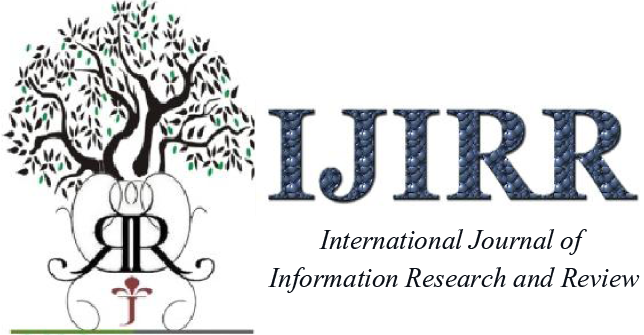



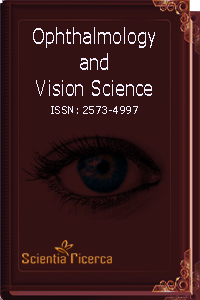
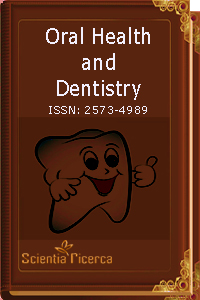
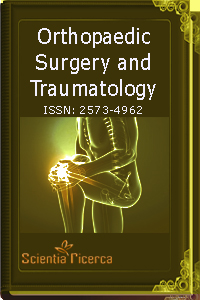
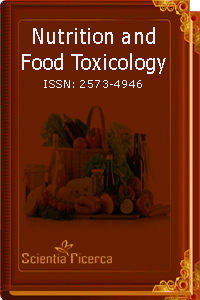
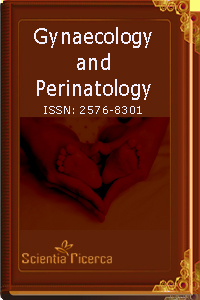
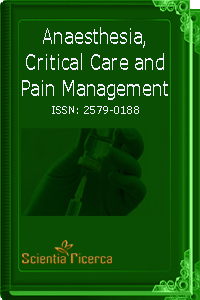
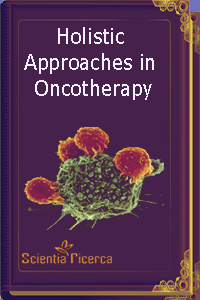
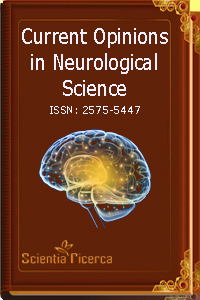
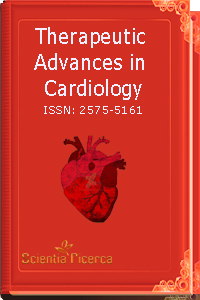
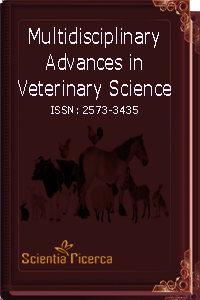
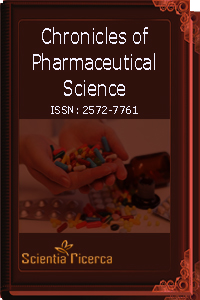
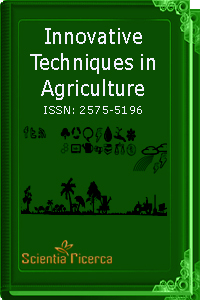
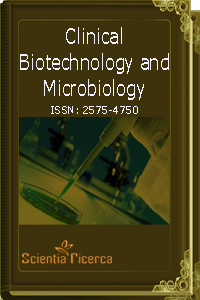
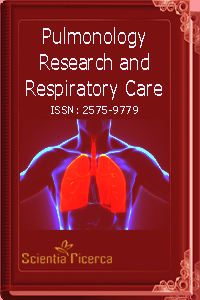
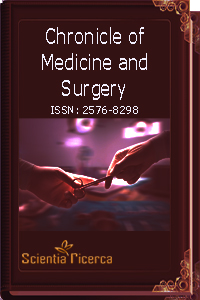
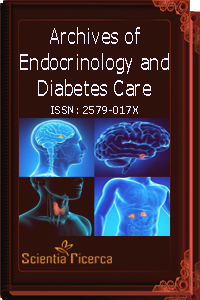
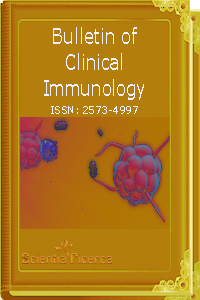
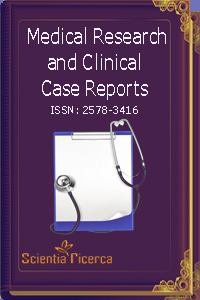
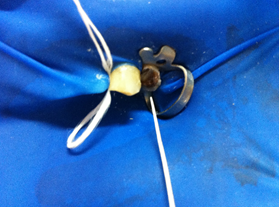
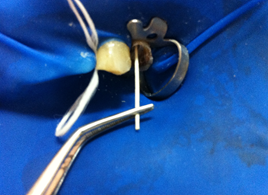
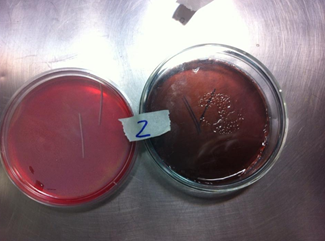
 Scientia Ricerca is licensed and content of this site is available under a Creative Commons Attribution 4.0 International License.
Scientia Ricerca is licensed and content of this site is available under a Creative Commons Attribution 4.0 International License.